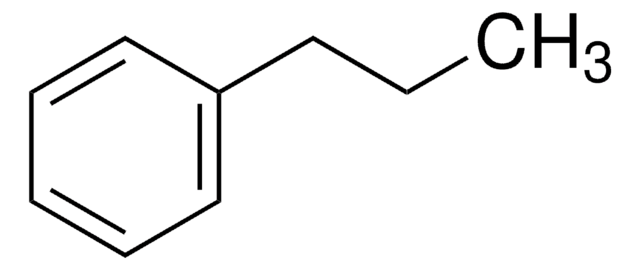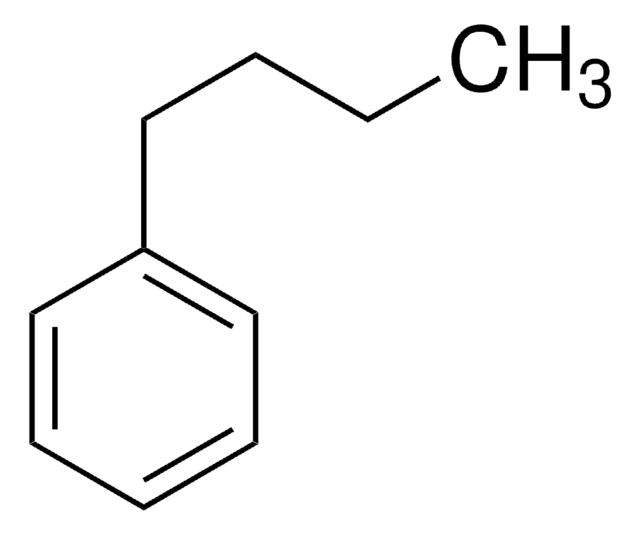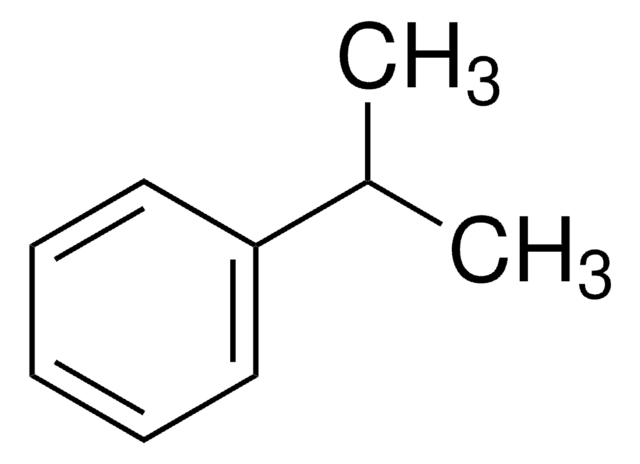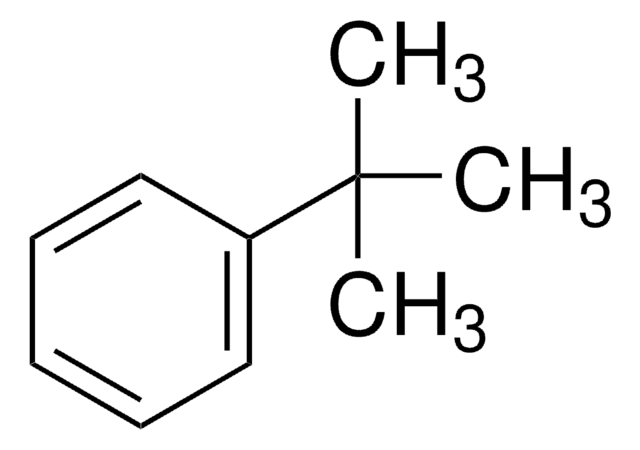82118
Propylbenzene
analytical standard
Synonym(s):
1-Phenylpropane
About This Item
Recommended Products
grade
analytical standard
Quality Level
vapor density
4.14 (vs air)
vapor pressure
2 mmHg ( 20 °C)
Assay
≥99.0% (GC)
autoignition temp.
842 °F
shelf life
limited shelf life, expiry date on the label
expl. lim.
6 %
technique(s)
HPLC: suitable
gas chromatography (GC): suitable
refractive index
n20/D 1.491 (lit.)
n20/D 1.492
bp
159 °C (lit.)
mp
−99 °C (lit.)
density
0.862 g/mL at 25 °C (lit.)
application(s)
environmental
format
neat
SMILES string
CCCc1ccccc1
InChI
1S/C9H12/c1-2-6-9-7-4-3-5-8-9/h3-5,7-8H,2,6H2,1H3
InChI key
ODLMAHJVESYWTB-UHFFFAOYSA-N
Looking for similar products? Visit Product Comparison Guide
General description
Application
Recommended products
Signal Word
Danger
Hazard Statements
Precautionary Statements
Hazard Classifications
Aquatic Chronic 2 - Asp. Tox. 1 - Flam. Liq. 3 - STOT SE 3
Target Organs
Respiratory system
Storage Class Code
3 - Flammable liquids
WGK
WGK 2
Flash Point(F)
107.6 °F - closed cup
Flash Point(C)
42.0 °C - closed cup
Personal Protective Equipment
Choose from one of the most recent versions:
Already Own This Product?
Find documentation for the products that you have recently purchased in the Document Library.
Customers Also Viewed
Articles
A shortened review of fundamentals of Porous Graphitic Carbon (PGC) materials. What they are and how do they work as a stationary phase material in HPLC?.
Protocols
-Xylene; Nonane; Propylbenzene; Mesitylene; 1,2,4-Trimethylbenzene; 1,2,3-Trimethylbenzene; 1,3-Diethylbenzene; 1,4-Dimethyl-2-ethylbenzene; 1,2-Dimethyl-4-ethylbenzene; Durene; 1,2,3,5-Tetramethylbenzene; 1,2,3,5-Tetramethylbenzene; 2-Methylnaphthalene (β)
Our team of scientists has experience in all areas of research including Life Science, Material Science, Chemical Synthesis, Chromatography, Analytical and many others.
Contact Technical Service












